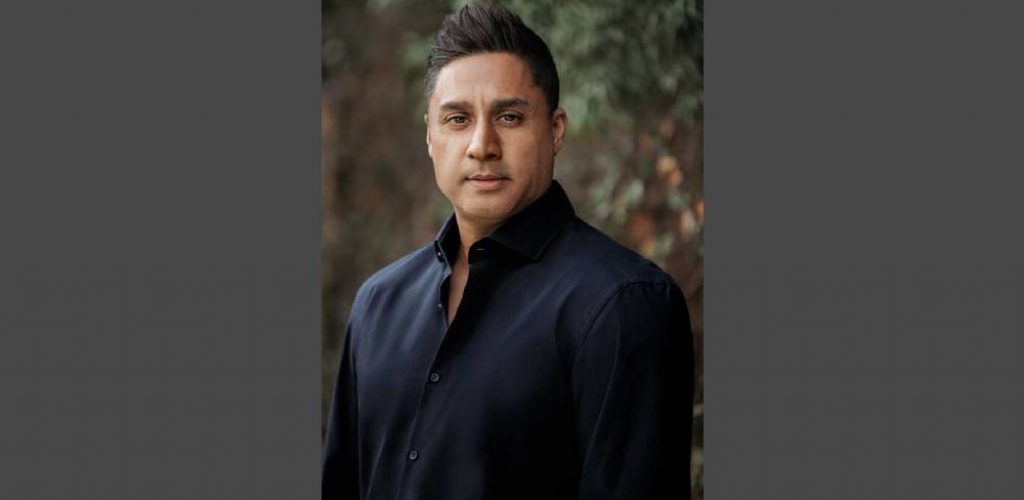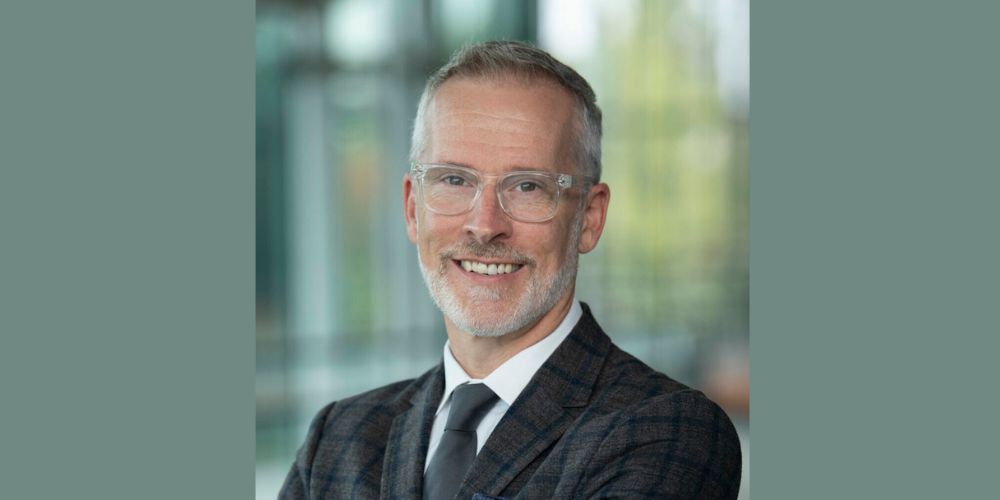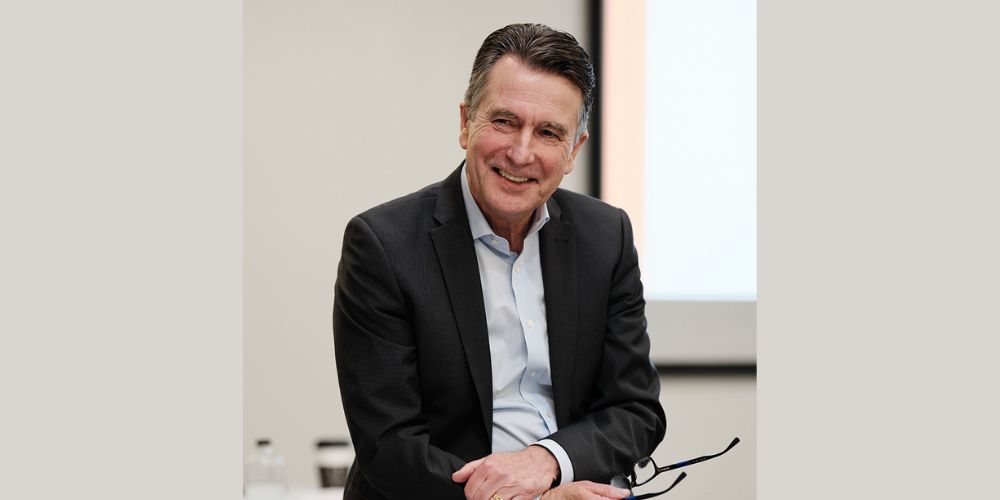Raj Girn: This week’s theme is a new series that I started called A CEO’s Journey, where I catch innovative company leaders in conversation, where I look to seek knowledge on how they think, make decisions and project their companies forward in warp speed. This week’s two-part series is entitled ‘Why the CEO is the Most Creative Member of Hyper Successful Companies.’ My guest today is a long time friend and colleague. Ranj Bath, who is the CEO of Nurosene, an innovative app solution to build better brain health, which IPOed just recently after barely a year since inception.
Here is Part Two of our conversation:

Raj Girn: Under your guidance, Ranj, Nurosene has been taken into an IPO barely a year after inception. Honestly, when I read that, you probably saw I was like congratulating you and I was so intrigued about this. And I want to ask you about this. Why choose to go the IPO route at this stage in the game when most people would be fundraising using the usual suspects like Crowdfunding, hedge funds, angel and venture capitalist raises? Why did you decide to do this? I’m so curious.
Ranj Bath: Well, the idea of a Nurosene was actually in 2019, I think it was. A couple of guys got together in a parking lot and they came up with the idea and they started building it. And then it’s definitely going over the last year. And then like I said, I joined back in the last year. And the reason I wanted to go down the IPO was . . . And I understand it gives us a lot more scrutiny. I had to clean up my Instagram. I’m pretty squeaky clean, you know that. But it gives us access to all sorts of . . . First of all, I didn’t want to go down the VC route. I’ve raised capital for other companies. I feel like going down the VC route you have to fit in the constructs of VC. Like how many users do you have? How much revenue do you have? The minute you say that it’s like, oh yeah, I passed on that, you know, it’s not done and it’s not in that growth mode. So we’re building a very different company.
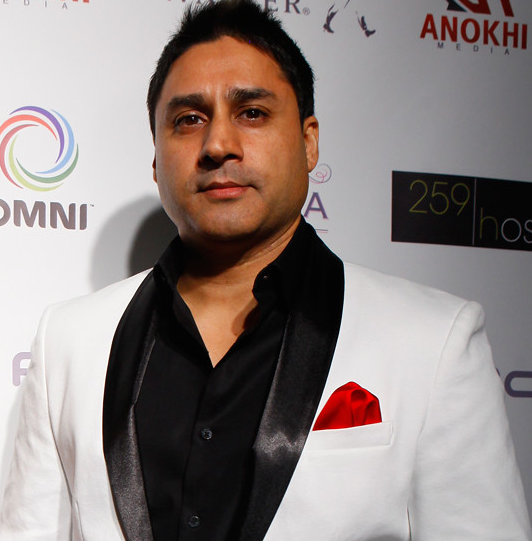
So going down the IPO we closed more than I expected. We were oversubscribed and closed to an incredible valuation. And it’s been growing since. It’s been kind of crazy. But it gives us access to different kinds of capital like traditional institutional investors, wealth management, individual retail investors who are also our customers as well, and investment banks as well. All of this keeps us honest as well, keeps us in the public eye. And the money we’ve raised is really to fund a lot of M&A. And that’s what we’re doing. We’re going to be growing M&A into ancillary businesses that complement the offering that we’re doing and also help us with growth and building market capital in the company. So there’s real solid reasoning behind it. And now I have, as I mentioned to you earlier just before the call, fundraising’s never done right. So I’m going out. I’m doing the roadshow and we’re going to continue to build. But it gives us the the ammunition to go and do the things that we really want to do. And I want to build a conglomerate in mental health today. But build something incredible with all these pieces coming together to help with that pathway to to help people find solutions.
You know, being a creative CEO takes a lot of guts. You’ve got a lot of guts, sweetheart. Can you share with everyone out there who are kind of grappling with this whole idea of really putting themselves out there when it comes to some of the ideas that they have? Because we know statistics prove that a lot of ideas never come to fruition because people just don’t have the guts to kind of take it to where it needs to go. So I want to get your perspective on that. How how can people set their minds around being able to understand how to really kind of push forward their company where it needs to go and kind of not allow the fear factor to kind of get in the way of that?
I think I kind of got over that many years ago when I moved to the States. I’ve been in the in the U.S. now for over 20 years. And I moved right in the middle of the downturn, the big crash. And and I got an opportunity to be with my company. I was with Intel at the time and they said I was going to move to Santa Clara, to the head office. And I was like, I’m going to do this right now with so much uncertainty. And I thought, you know, when am I ever going to get an opportunity like this? So I took a risk and it was incredible. And then when I started, I was with Intel for a number of different years because I needed a creative outlet, music was always in the blood and I was always doing that.
And then this caught the attention of some venture capitalist: you should do this. But I’ve got this amazing paying job, why do I want to go and do something like this? Why not? If I don’t do this now it’s never going to happen. So I took another risk and and it was incredible because there was so much positivity and the support that I got around that paid off. And then, you know, even now I’m doing something which I don’t know where this is going to go right now. But what I would say to anyone is when you got an idea in a smart way, shape it, nurture it, build a plan around it. But then when you’ve got all these pieces, then you’re the only one stopping you from actually going and doing it. So go make it happen.
“When you got an idea in a smart way, shape it, nurture it, build a plan around it. But then when you’ve got all these pieces, then you’re the only one stopping you from actually going and doing it. So go make it happen.” ~Ranj Bath
Absolutely. Wise words and if you think about the amount of people out there that we look up to, if they hadn’t kind of heeded those words that you just shared right now and just bit the bullet and moved forward, there’s a lot of innovation that wouldn’t have happened. So it’s important to think about whether you want to be that person or not. And it’s okay if you don’t. Not everyone’s made to take those kind of risks. So let me ask you, I want to go back into the IPO decision that you had. What is it that you hope to accomplish from this particular IPO decision? Let’s just encapsulate that for a second.
As I mentioned, it’s given us the runway now to go and stop building. It’s given me runway. I mean I’m in crazy hiring mode right now. We’ve been bootstrapping, like every other start-up, right? We didn’t know how much capital we were going to raise. And now we got a stage where I feel, well, we need to execute on a grand vision. And that’s what it’s allowed us to do. It’s allowed us to exhale slightly just to say, okay, well, one of the pieces that we need to put in place to start growing, how do we start testing the different things? Because right now there’s a lot of unknowns. But we’re going to test them, evaluate, help them guide where you’re going. But for us, it’s growth now, Now we’re going to start unfolding the story even more. Get people behind the charge that we’re building something that everyone . . . It really isn’t just like a product push. Everyone actually needs this.
Another thing that’s really important for everyone else in a company — from the found to myself and everyone on the team — we’re so passionate about what we’re building and that comes through. Everyone loves being here because we couldn’t wait to get this out there. And the first iteration of it is get people comfortable understanding it. It’s kind of like the first iPhone. If you put this thing in people’s hands right now, people had never seen it before. They don’t now what this thing is. So we’re chipping away at these pieces. But it’s allowing us that growth opportunity. It’s allowing us that room to keep on building and start bringing in complementary solutions, as I mentioned, to go through the M&A. And that’s important for us to be able to have that flexibility. If I was under the VC route, in two or three years, they’re like you need to be here. We’re looking for that growth. I don’t want to do that. I want to go wherever this is needed and be conscious of that constantly and that being in the public eye, being guided by that gives us a lot of access and room to to grow more freely.
Right. So for those people looking to fundraise, once you’ve done it numerous times, when is the right time to do that?
There’s not one answer. All I would say, it really depends on where do you need to go as a company? Why do you need to fundraise? So I would recommend — and I give this advice to so many people — you bootstrap as long as you can. Generally, this company build is slightly different, but bootstrap as long as you can, because obviously you’re earning more equity. And only think about fundraising when you’re very clear of what the use of funds is going to be for. And when you’re also ready to execute on a plan. If, let’s say, that funding did come in, that you can execute. And also there should be a growth plan if you raise more than you needed. But just really thinking about that: what do you need those funds for? What is it going to help you with? And have you done enough investigation into the market to know that if you turn this thing on, that this thing will scale?
So how do you know whether to IPO or traditional fundraise? How do you know which way to go for those people who have never fundraised before? I mean, and also hybrid models. People do a bit of both, which is what you’re doing.
First of all, this isn’t me. I’ve got a whole team of very smart people behind me. I’ve never taken a company public before and I’ve learned a lot through this process. It’s a process. It’s a long, drawn out process. I’ve done it in record time. I did it in four months where people take a year and beyond even that. I felt like it was longer than I wanted because there’s all sorts of delays in the regulations because of backlogs from the pandemic. But that’s me. I just want that momentum. I want it done. But it’s not for any start-up, unless you’ve got the kind of resources that I had to support you and guide you to the process, I wouldn’t necessarily recommend it.
But I also had this bigger idea of what we’re going to be doing and what we’re shaping, to build this grander vision for the company. So what I would recommend to people is find strategic investors. You don’t need to go out to have venture capitalists off the bat. And sorry to knock a lot of VCs, but a lot of them are like ambulance chasers, like, oh, let me see . . . And then they jump on the train. Before that it’s like I’m not sure what it is and when to jump in. Find some individuals that can help fund you. You need help to fund you or help you fundraise so through their networks. But also guide the strategic vision of what you’re doing because these guys have probably done it over and over. Their serial entrepreneurs and have probably done some incredible things. Get some guidance from people like that. I think super, super important, I guess. Get some good angels I think first.
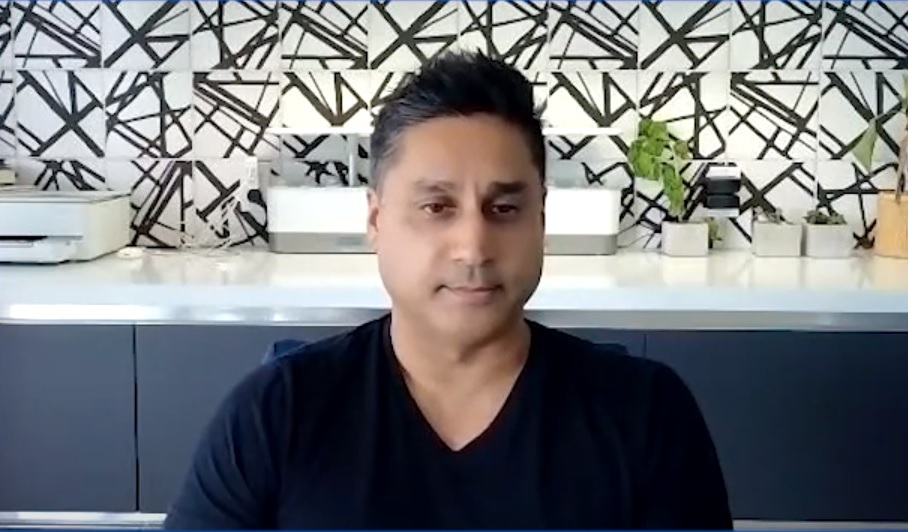
Absolutely. I completely agree with what you said there. And it also helps you to not give up so much of equity as well. That’s the other big piece of this is giving up too much too soon. So let me ask you this, Ranj. What in your experience, now that you have walked in the shoes of being a CEO and done something quite innovative quite early on considering traditional ways of growing companies, what would you say is the magic criteria that makes for a strong CEO?
I think kind of coming back to the point you make about the beginning is that creativity. So someone who has that vision to not be so regimented, to be someone who’s compassionate, to listen to all the people around him, the team, the extended team of people, and to understand how this thing is going to grow together and be creative enough to think about all those things coming together, of how they are going to fit in the constructs of really building an exciting brand. You know, as a CEO, I have to, while I’m in my day-to-day stuff, be that visionary. People are constantly asking, “Well, you know, where do you see this going?”
Always asking for those ideas. I’m not saying I’m a micromanager, but I get involved in everything. From supply chain to design. And I’m in the weeds on design because a lot of my background is being a marketer. I love design and that’s kind of beginning to come through with the company. But just to really understand every group’s and department’s and individual’s pain points and be considerate of that. But also being a real leader that is very definitive when you have to make decisions, because sometimes it’s like what’s going on? I’m not sure. Sometimes you’ve just got to go with it, go with your gut. But to be a very considered person that’s making that decision.
Absolutely. You are such a hands on CEO. You’re the perfect kind of start-up CEO. You’re the kind of CEO that people want to be the CEO because they feel that you’re vested in what they’re doing as well. And that’s really a key fundamental in leadership. The thing that people have to think about is a lot of people like these titles and like the idea of being a boss. But to be a true boss is to be a leader that lifts up everyone that’s on your team. And that’s what you’re saying here, is that you like to see what everyone is up to and you are genuinely vested in them doing their best. This is what I’m hearing you say.
And it comes across. First of all, I have not met anyone on my team. This is the world we live in. So, we speak on Zoom calls every day. And I’m running this company from L.A. and everyone else is in Toronto. But, like I said, it comes across when every single one of them is so passionate to go over and above. These guys are working late nights and weekends, which I’m not asking them, but they’re so passionate. We really want this to succeed and they feel empowered. And I think that’s that’s very important, to make sure that people feel a part of what we’re building.
Absolutely. So in this particular role, Ranj, as CEO, what specifically have you learned that perhaps you feel that maybe you wouldn’t have learned not being in the role of a CEO because you’ve had some really interesting senior positions across multiple companies? And I’m interested in your answer because oftentimes when I speak with CEOs, they found a CEO, which is a different kind of a CEO to someone that has been in the game in senior levels of management, in different industries, is now coming into this role. So I’d love to know your thoughts on what have you learned in this role that perhaps you may not have learned from the things that you’ve done before?
I’ve managed teams in my in my career before. And yes, I always delegate and you have to because you’re doing everything. I think the thing that I’ve learned the most is to respect everyone’s capabilities, strengths, and differences as well. My founder, Daniel Gallucci, he opened his arms to me, coming in. You always wonder what it’s going to be like, he’s the founder and I’m coming in as CEO. He taught me that. He was like, “I can’t run this company. I know my strengths.” And he’s brilliant at what he does but he needed some support from someone like me to come and help and guide and shake the company and be that visionary. And we have an amazing relationship. And that taught me, I think, as we inherit people, but also in hiring people, but we’re hiring people for a reason.
“The thing that I’ve learned the most is to respect everyone’s capabilities, strengths, and differences as well.” ~Ranj Bath
We’re hiring people because of those strengths. All these people come in with something incredible to offer. And I’ve hired them for those reasons or I’ve empowered them for those reasons and to keep respecting that. And that’s when I feel that you get the most out of people and more so than anything, where as much as they’re looking to me to be the visionary, I’m learning from these people. I mean, what is the direction of this company? I’m learning from the people that I’m around helping shape that. So we’re all in this together. So that’s why I’ve learned the most, is by building something incredible. And the reason this is going to win and I know it’s going to win is because everyone is working towards that same goal and because they feel empowered.
It’s so interesting because do you remember off the top of this conversation, I’ve given you my definition of what I feel a creative CEO is. And I mentioned to you that the most fundamental thing is to be able to do one thing with a company and stay on point with the company’s vision and to build everything around that. And this is exactly what you’re saying. So I guess I must be doing a thing or two right. So I have to ask you this question, because you’ve worked with so many different types of founders over the years and so many in your network and many of them are women. So I have to ask you this. Statistics show that women-founded companies are more successful than male-founded companies on certain levels, yet they get less than 10 per cent of funding. Having been around a lot of founders, male or female, at different levels, what would you say to female founders looking to close the fundraising gap that could be tied into being a creative CEO? And what have you seen that they’ve done wrong that perhaps they could do better?
That is really interesting question. I’ve been surrounded by very powerful women like yourself. Payal Kadakia who is the founder of ClassPass, I think you have had her on the show. My ex. I didn’t think I’d be talking about her but when I started this year, she came in and was the figurehead, she became CEO of DesiHits. And I think something that always resonated with me was she would, and this was way back in the day, get people coming to her. You know women coming to us saying it’s really tough out there. We’re trying to find ways, we just don’t get lucky. And it’s just not fair. And Anjula, you know she’s a power woman right? And she’s like, you know what I’m not going to cry foul. I’m going to go out there and do it. Because it’s just too easy to say you’ve been dealt a bad card. I’m going to go out there and do it and use my strengths, use my differences, her differences of being this South Asian woman who was certainly educated but not educated in the fields that she was building, of being CEO before.
But she was like I’m just going to do it. And think about what we achieved with DesiHits. If we wanted to get someone, just get to them. And I’ve used that mantra all the way through. Like even now so many incredible people have got involved with Nurosene. I’m just like, I’m going to call them up. I’m going to be ballsy. I’m going to go out there and do it. And I think that goes back to females as well. Just go out there and use your differences, use your creative differences and feel like that is a competitive edge for you being different. Because think about the VCs. They all have the same old story, a whole bunch of guys. Come at it with something different, come up with a difference, come at it from maybe some of the different emotions that you can evoke as a woman and use that to your strength. I think now’s a better time more than ever. And we’re all helping and supporting different communities succeed and being more supportive. And there’s a lot more opportunities out there. Take advantage of it, go out there, use your advantages. I think it’s a great time.
I completely agree. I don’t think there’s ever been a better time in human history that’s ever been recorded that better positions women to get allyship from men that they’ve ever gotten before and also to be able to put their differences forward and for them to be a positive narrative rather than all the years that it’s been a negative narrative. So I think that shift alone is something that really could change the game. And I’m probably going to get beaten up for saying this Ranj, but I’m kind of in a place where I’m done listening to people whine, including women. I’m a woman, so I can say that. And and I’m like, it is what it is. So what are you going to do about it? Where are we putting our energy here? Are we going to put our energy into actually getting something from our narrative or are we going to keep pondering to the narrative that we’ve been forced to live? So I think there is a lot of mindset shifting that needs to happen there and we need to just get up and support each other.
Get the support of male allyship, because I really feel that at the end of the day most of the financing dollars are controlled by men. Like we can’t get away from that being the fact. So the fact what are we going to do about that knowledge? How are we going to get a bigger piece of that pie? And I think that’s the conversation that needs to be had, because I think the conversation about people not accepting the narrative is ages old. It’s tired. Let’s move from that and let’s start to actually look for the support rather than look at all the things that we’re not getting support from. I mean, that’s just me soapboxing. But I just have to put it out there because the amount of times that I’ve done different things and I’m like, put your big girl panties on Raj. Get out there and just get shit done.
“Get the support of male allyship, because I really feel that at the end of the day most of the financing dollars are controlled by men. Like we can’t get away from that being the fact.” ~Raj Girn
Yeah, exactly.
So with that said, I’m going to ask you this as we get ready to close off. And there’s so much more that I want to talk to you about. But I know that we’ve got to close this off now. So I want to ask you this Ranj. Is there anything that you feel that I haven’t asked you, that you feel people need to know about Nurosene and that people need to know about being creative as a CEO?
I think just the fact that we’re always going to be mindful of what we’re building and coming back to the responsibility to educate, the responsibility to make sure that we always stay true to that mission of providing that support to people that need it most. So I will be mindful of that. And we’re taking even the beginnings of what we’re building and we’re already on that pathway and everybody is supportive of that as well. So just to to really never lose sight of that. And I think coming back to that, why we’re in the public eye and we are very much in the public eye now. You’re hearing it for me. You know, we’re not here to force people to pay for the outcome. That will never change. You hear this for me and it will never change.
And I’m hoping that as we do more of these type of interviews and we tell the story, I want to invite people to come and be on this journey with us. So I think that’s super important because everyone is now on the mental wellness journey and beginning to understand that this is so important. But let’s not forget the people that are going through stuff. Let’s not forget the people around us who suffer with some condition, to be mindful of them as well and help them. I’m not saying you need to buy our tools, all I’m saying is help them with any support that they need in this whole area of mental health. And then on the creative side, as a CEO, just thinking about creative ways to get that message across. And you’re going to hear some very exciting things which are coming very soon.
That means that’s an opportunity to have you back on right?
Maybe after we’ve done some more incredible things down the road. So, yeah.
I look forward to that, sweetheart. So let’s send people over to where they can go to get the app. You talked about the content as well. Is that on the app? Is it on a website? Tell us how to navigate this.
So the easiest way is download the app on the App Store. It’s called Nuro. So that’s the brand. It’s Nuro the app. Our supplements are launching in the next few days on the e-commerce store. But you can find all that nurosene.com is the company. So you can find information there. And Instagram is actually a really great place to get these little nuggets of of information. I told you, that’s been super well-received. So you can see more of the story unfold as well.
That’s brilliant. What’s the handle for that?
It’s @nurosene.
And if anyone wants to go hang out with you on social, where do they go Ranj?
You can find me on Twitter @ranjbath.
OK, brilliant. Thank you so much for joining us for this really valuable breakdown on how to be a successful CEO. Ranj, your insights for would-be CEOs are like manna from heaven. I could talk to you for so much longer. I really appreciate you. Thank you so much for coming on, sweetheart.
Thank you. It’s been fun.
I’m so glad!
Folks, thanks for hanging out with Ranj and me today. I really hope that you got some real value from our discussion and that you understand why it’s so important to be creative in any leadership role today. For more trainings like this, please subscribe to our YouTube channel at The Open Chest Confidence Academy and our podcast platforms, Apple, Google, Spotify, search the ‘Transform Your Confidence Show.’ And I encourage you to join our free coaching newsletter community. Just head over to the website at www.TheOpenChestConfidenceAcademy.com/newsletter. And finally hop on over to our free professional development incubator on Facebook at Transform Your Confidence.
Uuntil next week, take care of yourselves.



